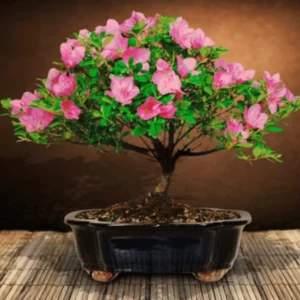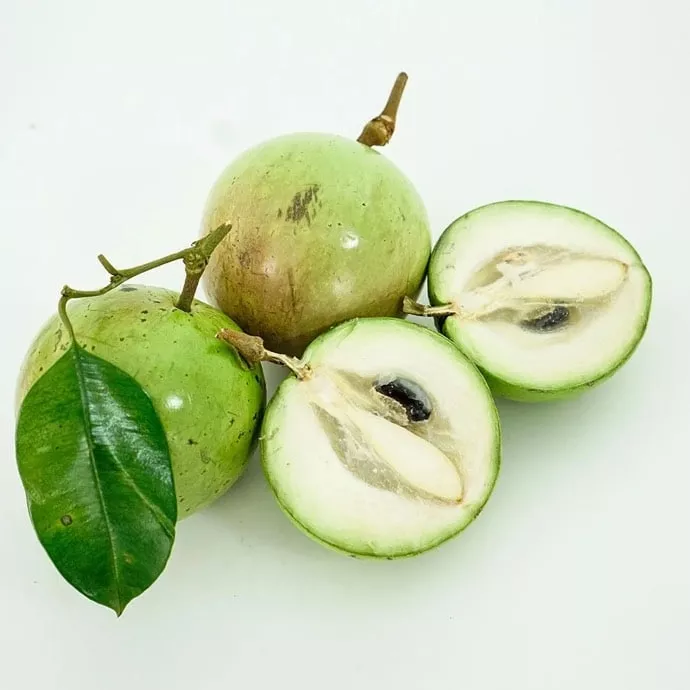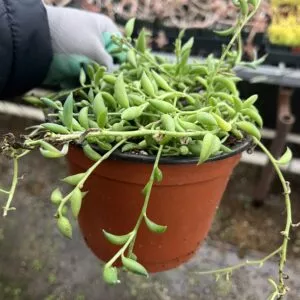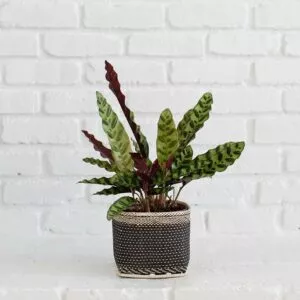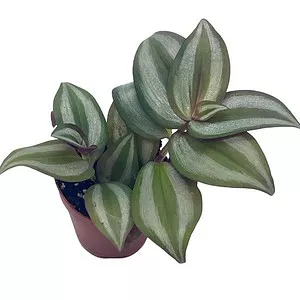No products in the cart.
Table of Contents
Did you know that the Elderberry can be grown as a shrub or a small tree with a height and spread of 6 feet? Elderberry leaves are pinnate, with 5 to 7 oppositely placed leaflets. The leaves are green in hue and have serrated edges.
The Elderberry trees also produce flowers! They are ivory white and grouped in corymbs, which are multi-branched, flat inflorescences. The bush yields bunches of dark purple to bluish-black fruit for making wines, juices, jellies, and jams.
A popular variety is the Elderberry wine. The European Elderberry produces lots of edible fruit but is rarely eaten raw as it is bitter. The berries are also loaded with vitamin C. If you cannot cross-pollinate the tree, you need not encourage cross-pollination, as the Elderberry bush can self-pollinate!
Elderberry produces flowers that contain both male and female reproductive organs. Flies are responsible for the pollination of their flowers.
Want to grow Elderberries in your rain gardens? Growing Elderberries is possible in your own backyard, so continue reading below!
Elderberry Plant Care Basics

To help you learn more about these Elderberry shrubs, here’s a little overview of them.

Ready to learn more about planting Elderberry bushes? Find yourself comfortable now, and let’s begin the journey!
Recommended Potting mix
They thrive in soils that are consistently moist and fertile. Elderberries have short root systems and do not thrive in dry environments. If your soil is sandy and doesn’t retain water well, you’ll want to amend it with plenty of organic matter and water it often.
Although the plant can thrive in a variety of soil types, it must be well-draining! It is because they have shallow roots, and we don’t want to damage them because of our failure.
Pro tip: When it comes to pH, the soil might be acidic or alkaline, but somewhat acidic (5.5 to 6.5) is best.
Elderberry Bush Lighting Requirement
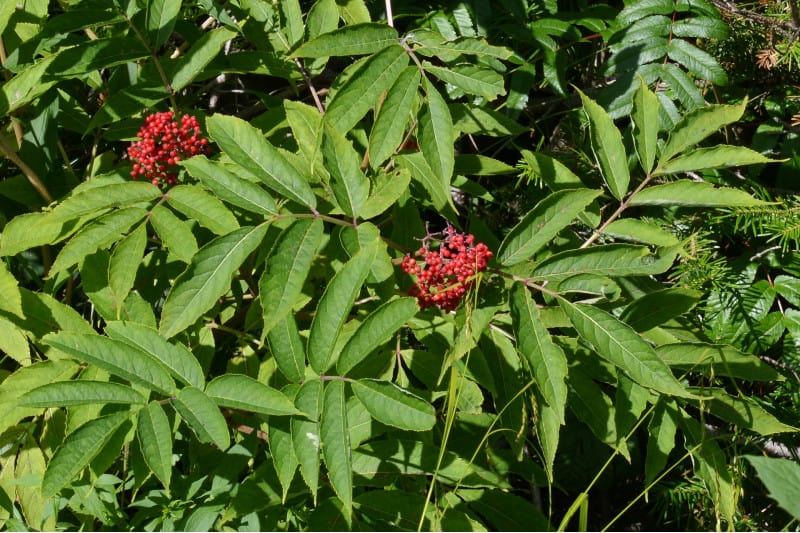
Most other Elderberry species like full to partial sun to partial shade. Most of these beauties are definitely treated as outdoor plants in warm climates. Aim for at least six hours of direct sunlight each day.
They’re a fine choice for locations with less than full sun, but give them as much sun as possible if you want the most excellent crops possible.
Watering Elderberry Tree
Drought is about the only thing that these medicinal plants can’t stand. During its peak growing season, particularly during extremely hot or dry weather, your
Elderberry will require about an inch or two of water per week. Elderberries should be irrigated profoundly and thoroughly the first year after planting since the root grows near the soil’s surface.
Pro tip: Increase the amount or frequency of your irrigation if the top inch of soil is dry between waterings. The plant will be dormant over the winter months. Only occasional watering will be required to keep the soil from drying out completely.
In stock In stock In stock In stock
Free Shipping
$8.96
Sold By:
CZ Grain
10 Orchid Tree Seeds for Planting Butterfly Tree Bauhinia purpure
Only 999 available and it’s in 1 people’s basket Rated 4.60 out of 5 based on 156 customer ratings00
Sold By:
CZ Grain
Free Shipping
$193.17
Sold By:
BONSAI WORLD LLC
Pink flowering Medium azalea bonsai tree
Sold By:
BONSAI WORLD LLC
Free Shipping
$145.00
Sold By:
Andygarden2023
white caimito- star fruit grafted tree 4ft
Sold By:
Andygarden2023
$19.99
Sold By:
Cacti and Exotica
Senecio radicans | String of bananas | 6″ Pot
Rated 4.98 out of 5 based on 59 customer ratings00
Sold By:
Cacti and Exotica
Ideal Temperature & Humidity
Given its wide range of hardiness zones, American elderberry plants aren’t fussy about temperature. However, it is an indoor plant that prefers to be cold and damp rather than hot and dry. Though it favors mild weather, it has no special humidity requirements—though it does enjoy the rain!
Elderberry tree Necessary Fertilizer
Fertilization isn’t usually necessary to keep elderberries lush and healthy, and you should be able to detect whether you need to add nutrients just by looking at the shrub. No fertilizer is required if the plant is exceptionally vigorous and produces a lot of new growth each year.
If there aren’t many new canes being formed and development is slow, you should fertilize with a slow-release organic fertilizer.

Better still, have your soil analyzed to see if the pH and nutrients provided are sufficient.
Pro tip: For starters, try adding manure or compost to the soil where your bush will be planted to boost its nutrient density.
Propagating our Elderberry bush
Ready to propagate your Elderberry shrubs? Don’t worry if you’re still a beginner. I know if you’ll just learn the basics, it will grow and thrive beautifully! You can have your cuttings in the early spring.
Here’s how you will propagate them:
- The method entails removing three to six inches of the branches’ greenest tips. You can remove the leaves from the branches, leaving only one primary leaf at the end of each branch.
- To keep your softwood cuttings fresh, soak them for 12 hours in a mason jar of water before planting them in soil with the correct pH for Elderberries.
- Instead, you may insert the new cuttings directly into the soil after the 12-hour soaking period if you are confident that they will not be disturbed.
- Maintain a moist environment around the new planting, but not to the point of standing water. Within a few weeks, the cuttings should take root and begin to grow into miniature replicas of the original plant.
Growth Zone

The Elderberries are hardy in USDA zones 3-9. Some elderberry cultivars may produce as low as zone 3, while others can withstand temperatures as high as zone 9.
Potting and Pruning
Elderberry plants require a large container in order to thrive. Choose one that is at least 24 inches broad and 20 inches deep for the most outstanding results. Because this plant has shallow roots, a wide container is more vital than a deep one.
Pruning elderberries is easy, and doing it on a regular basis not only maintains plants thick and manageable but can also result in a beautiful display of colorful foliage. Removing older branches will improve fruit production as well.
When the plant is dormant and before the leaves appear in late winter or early spring. If you don’t want your plants to bear fruit, you can trim them right after they flower.
In stock In stock In stock In stock
$40.00
Sold By:
NEEPA HUT
6″ Rattlesnake Calathea indoor plant + Charcoal Planter Basket
Only 4 available and it’s in 2 people’s basket Rated 4.99 out of 5 based on 221 customer ratings11
Sold By:
NEEPA HUT
$5.99
Sold By:
BubbleBlooms
Wandering jew, Tradescantia zebrina Bosse
Only 27 available and it’s in 5 people’s basket Rated 4.81 out of 5 based on 279 customer ratings01
Sold By:
BubbleBlooms
$6.00
Sold By:
Smoot's Farm
Succulent Gasteraloe Flow 2″ Pot Live Plant
Rated 4.89 out of 5 based on 27 customer ratings00
Sold By:
Smoot's Farm
Free Shipping
$13.99 – $24.99
Sold By:
Desert Noir
Rooting Soil, Desert Noir, proprietary blend, cactus, propagation, succulents
Rated 4.99 out of 5 based on 234 customer ratings04
Sold By:
Desert Noir
Elderberry Varieties and Similar Plants
If you think that there is only one-of-a-kind like this beauty, you are very wrong! There are also tons of cultivars of this Elderberry Sambucus canadensis. You won’t be disappointed by the benefits they provide, whether you want to cultivate them as a hedge, a butterfly habitat, or for food and medicinal applications.
They are as follows:
‘Instant Karma’ Elderberry
There’s Elderberry if you like variegated leaves. Green and white leaves with constant variegation emerge from ‘Instant Karma.’ If a pollinator variety is available, white flowers develop in early summer, followed by rich purple-black berries. ‘Instant Karma,’ like all elderberries, thrives in full sun or part shade and can be used as a shrub border or a hedge in the landscape.
Blue Elderberry (Sambucus nigra ssp. caerulea)
This bears enormous, powdery-blue berries that can be mistaken for blueberries. The berries are not only noticeable but are also noted for their deliciousness. It is the largest species of Elderberry, reaching up to 30 feet tall and frequently mistaken for a fruit tree.
Red elderberry (Sambucus racemosa)
Red Elderberry is a popular choice for ornamental shrubbery because it yields brilliant red berries that are often harmful to humans. It thrives in USDA Hardiness Zones 3 through 7 and has any elderberry species’ most vigorous cold resistance.
Elderberry Plant Diseases & Pests
While there aren’t many difficulties to worry about when growing American elderberries, you may encounter common problems like aphids, mealybugs, elder shoot borer, and scale. To get rid of the bugs, cut back canes until they’re hollow, then burn or dispose of the diseased material. If they aren’t entirely gone yet, you can use insecticidal soap.
Additionally, canker, leaf spot, and powdery mildew are also diseases that can affect American elderberries. To avoid these diseases, provide the best atmosphere for your plant. Weeds are also the greatest significant threat to the plant since they may rapidly choke out their thin roots if left untreated.
Clear the soil of any weeds that are encroaching on your elderberry plants on a regular basis.
Frequently Asked Questions
Elderberries will grow on plants the first year, but it will take two to three years to fully ripen, depending on how they were supplied. Plus, Elderberry plants can survive up to 60 years if they are well-cared for.
Yes, they do multiply. Plants spread laterally from lateral roots and buds. Birds consume the berries and can disseminate the seeds all over the place.
They do not have that deep roots because they are known to have a shallow root system. As a result, weeding should be done by hand or with a tool that only penetrates the soil a few inches.
The elderberry plant can grow in the garden in full sun to partial shade. As long as it receives at least six hours of morning sun, it will produce delicious fruit for juices and wine.
The tree is the Sambucus canadensis, known as the American elderberry plant. It remains small, reaching a height of up to 12 feet, and the berries are also used for making winter.
No, it would be best not to consume them when green or eat them raw, as they contain harmful toxins.
Whether you want to buy, sell or simply reach out to other plant enthusiasts, Plantly is the right place to be!
In stock In stock In stock In stock
$40.00
Sold By:
NEEPA HUT
6″ Rattlesnake Calathea indoor plant + Charcoal Planter Basket
Only 4 available and it’s in 2 people’s basket Rated 4.99 out of 5 based on 221 customer ratings11
Sold By:
NEEPA HUT
$5.99
Sold By:
BubbleBlooms
Wandering jew, Tradescantia zebrina Bosse
Only 27 available and it’s in 5 people’s basket Rated 4.81 out of 5 based on 279 customer ratings01
Sold By:
BubbleBlooms
$6.00
Sold By:
Smoot's Farm
Succulent Gasteraloe Flow 2″ Pot Live Plant
Rated 4.89 out of 5 based on 27 customer ratings00
Sold By:
Smoot's Farm
Free Shipping
$13.99 – $24.99
Sold By:
Desert Noir
Rooting Soil, Desert Noir, proprietary blend, cactus, propagation, succulents
Rated 4.99 out of 5 based on 234 customer ratings04
Sold By:
Desert Noir

